
The Namib is a coastal desert in Southern Africa. According to the broadest definition, the Namib stretches for more than 2,000 kilometres (1,200 mi) along the Atlantic coasts of Angola, Namibia, and northwest South Africa, extending southward from the Carunjamba River in Angola, through Namibia and to the Olifants River in Western Cape, South Africa. The Namib's northernmost portion, which extends 450 kilometres (280 mi) from the Angola-Namibia border, is known as Moçâmedes Desert, while its southern portion approaches the neighboring Kalahari Desert. From the Atlantic coast eastward, the Namib gradually ascends in elevation, reaching up to 200 kilometres (120 mi) inland to the foot of the Great Escarpment. Annual precipitation ranges from 2 millimetres (0.079 in) in the aridest regions to 200 millimetres (7.9 in) at the escarpment, making the Namib the only true desert in southern Africa. Having endured arid or semi-arid conditions for roughly 55–80 million years, the Namib may be the oldest desert in the world and contains some of the world's driest regions, with only western South America's Atacama Desert to challenge it for age and aridity benchmarks.

Enemy at the Gates is a 2001 war film directed, co-written, and produced by Jean-Jacques Annaud, based on William Craig's 1973 nonfiction book Enemy at the Gates: The Battle for Stalingrad, which describes the events surrounding the Battle of Stalingrad in the winter of 1942–1943. The screenplay was written by Annaud and Alain Godard. The film's main character is a fictionalized version of Vasily Zaitsev, a sniper and Hero of the Soviet Union during World War II. It includes a snipers' duel between Zaitsev and a Wehrmacht sniper school director, Major Erwin König.

Home on the Range is a 2004 American animated Western musical comedy film produced by Walt Disney Feature Animation and released by Walt Disney Pictures. The film was written and directed by Will Finn and John Sanford and produced by Alice Dewey Goldstone, from a story by Finn, Sanford, Mark Kennedy, Michael LaBash, Sam Levine, and Robert Lence.
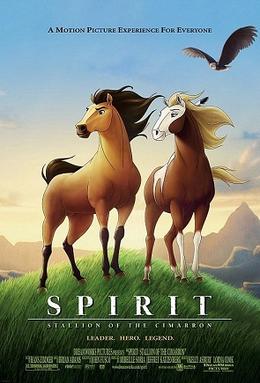
Spirit: Stallion of the Cimarron is a 2002 American animated western film produced by DreamWorks Animation and distributed by DreamWorks Pictures. The film was directed by Kelly Asbury and Lorna Cook from a screenplay by John Fusco, based on an idea by Jeffrey Katzenberg, who produced the film alongside Mireille Soria. The film combines traditional animation and computer animation.
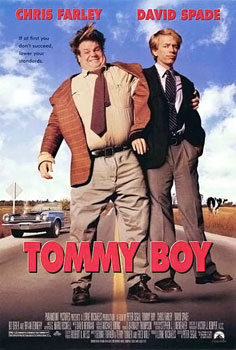
Tommy Boy is a 1995 American buddy comedy film directed by Peter Segal, written by Bonnie and Terry Turner, produced by Lorne Michaels, and starring former Saturday Night Live castmates and close friends Chris Farley and David Spade. The first of many films that Segal has filmed with former SNL castmates, it tells the story of a socially and emotionally immature man (Farley) who learns lessons about friendship and self-worth, following the sudden death of his industrialist father.

Jan Decleir is a prolific Belgian movie and stage actor born in Niel, Antwerp.

Kes is a 1969 British film directed by Ken Loach and produced by Tony Garnett, based on the 1968 novel A Kestrel for a Knave, written by the Hoyland Nether–born author Barry Hines. Kes follows the story of Billy, who comes from a dysfunctional working-class family and is a no-hoper at school, but discovers his own private means of fulfilment when he adopts a fledgling kestrel and proceeds to train it in the art of falconry.

A Far Off Place is a 1993 American adventure drama film based on Laurens van der Post's works A Far Off Place (1974) and its predecessor, A Story Like the Wind (1972). It stars Reese Witherspoon, Ethan Randall, Jack Thompson and Maximilian Schell. The plot concerns three young teenagers who must cross the Kalahari Desert to safety when their parents are killed by a poacher.

Horse behavior is best understood from the view that horses are prey animals with a well-developed fight-or-flight response. Their first reaction to a threat is often to flee, although sometimes they stand their ground and defend themselves or their offspring in cases where flight is untenable, such as when a foal would be threatened.

The Bear is a 1988 French adventure family film directed by Jean-Jacques Annaud and released by TriStar Pictures. Adapted from the novel The Grizzly King (1916) by American author James Oliver Curwood, the screenplay was written by Gérard Brach. Set in British Columbia, Canada, the film tells the story of an orphaned grizzly bear cub who befriends a large adult male Kodiak bear as two trophy hunters pursue them through the wild.
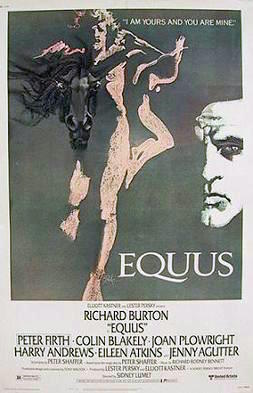
Equus is a 1977 psychological drama film directed by Sidney Lumet and written by Peter Shaffer, based on his play of the same name. The film stars Richard Burton, Peter Firth, Colin Blakely, Joan Plowright, Eileen Atkins, and Jenny Agutter. The story concerns a psychiatrist treating a teenager who has blinded horses in a stable, attempting to find the root of his horse worship.
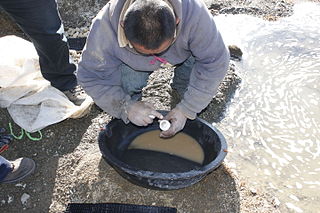
Ninja miner is a nickname for a person who digs small unauthorized mines or pans dirt for gold in Mongolia. The miners are so named because the green bowls they use for panning, when carried on their backs, are said to resemble the shells of the Teenage Mutant Ninja Turtles.

The Red Desert is a high-altitude desert and sagebrush steppe located in the south-central portion of the U.S. state of Wyoming, comprising approximately 9,320 square miles. Among the natural features in the Red Desert region are the Great Divide Basin, a unique endorheic drainage basin formed by a division in the Continental Divide, and the Killpecker Sand Dunes, the largest living dune system in the United States. In the 19th century, the Oregon, California, and Mormon Trails crossed the Continental Divide at South Pass, just north of the Red Desert. Today, busy Interstate 80 bisects the desert's southern region while gas field roads cross the desert.
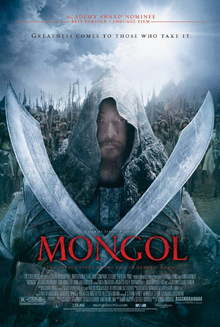
Mongol (Монгол), also known as Mongol: The Rise of Genghis Khan in the United States and Mongol: The Rise to Power of Genghis Khan in the United Kingdom, is a 2007 period epic film directed by Sergei Bodrov, about the early life of Temüjin, who later came to be known as Genghis Khan. The storyline was conceived from a screenplay written by Bodrov and Arif Aliev. It was produced by Bodrov, Sergei Selyanov, and Anton Melnik and stars Tadanobu Asano, Sun Honglei, and Chuluuny Khulan in the main roles. Mongol explores abduction, kinship, and the repercussions of war.

The Fighting Temptations is a 2003 American musical comedy film directed by Jonathan Lynn, written by Elizabeth Hunter and Saladin K. Patterson, and distributed by Paramount Pictures and MTV Films. The main plot revolves around Darrin Hill who travels to his hometown of Monte Carlo, Georgia as he attempts to revive a church choir in order to enter a gospel competition. He seeks the help of a beautiful lounge singer and childhood friend, Lilly, with whom he falls in love. Through the choir's music, Darrin brings the church community back together all the while wooing Lilly.

The Namib Desert horse is a feral horse found in the Namib Desert of Namibia. It is the only feral herd of horses residing in Africa, with a population ranging between 90 and 150. The Namib Desert horse is athletic in appearance, resembling the European light riding horses from which it probably descends, and usually dark in color. Despite the harsh environment in which they live, the horses are generally in good condition, except during times of extreme drought. The horses have been the subject of several population studies, which have given significant insight into their population dynamics and ability to survive in desert conditions.
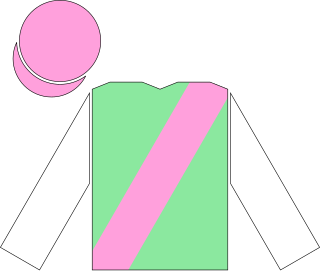
Oasis Dream is retired thoroughbred racehorse and active sire who was bred and trained in the United Kingdom. He was the highest-rated two-year-old in the 2002 European flat racing season and won the Cartier Racing Award for European Champion Sprinter in 2003.

Paco Boy is a retired Irish thoroughbred racehorse who was trained by Richard Hannon Sr. He won three Group 1 races including Prix de la Forêt, Queen Anne Stakes and Lockinge Stakes. Paco Boy was known as a hold up horse, usually coming from behind with a devastating turn of foot.

The Cumberland Island horses are a band of feral horses living on Cumberland Island in the state of Georgia. Popular myth holds that horses arrived on the island sometime in the 16th century with the arrival of the Spanish conquistadors. However, it is unlikely that any horses left by the Spanish survived, and more likely the current population descends from horses brought to the island in the 18th century by the English. Cumberland Island became part of the Cumberland Island National Seashore in 1972 when the National Park Service (NPS) took over its management. These horses are similar to the bands of horses living on the islands of Chincoteague and Assateague. There is estimated to be a population of between 150 and 200 horses on the island. Horses on Cumberland Island have a relatively short life expectancy, due to pest infestations, disease and their rugged environment. In 2000 a behavioral study found that instability marks the bands, with large numbers of co-dominant stallions, early dispersal of juveniles, and frequent band-changing among mares.

Spirit Untamed is a 2021 animated adventure film produced by DreamWorks Animation, and Dentsu, and distributed by Universal Pictures. The film was directed by Elaine Bogan and co-directed by Ennio Torresan Jr., from a screenplay written by Aury Wallington and Kristin Hahn, making this the second theatrical film release of the Spirit franchise and is both a spin-off and a stand-alone sequel of the traditionally animated Academy Award nominated Spirit: Stallion of the Cimarron (2002) and loosely based on the characters from its Netflix animated spin-off television series Spirit Riding Free, developed by Wallington.




















